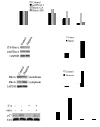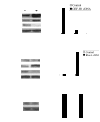Heparin inhibits pulmonary artery smooth muscle cell proliferation through guanine nucleotide exchange factor-H1/RhoA/Rho kinase/p27
- PMID: 20558775
- PMCID: PMC3095924
- DOI: 10.1165/rcmb.2010-0145OC
Heparin inhibits pulmonary artery smooth muscle cell proliferation through guanine nucleotide exchange factor-H1/RhoA/Rho kinase/p27
Abstract
Ras homolog gene family member A (RhoA) through Rho kinase kinase (ROCK), one of its downstream effectors, regulates a wide range of cell physiological functions, including vascular smooth muscle cell (SMC) proliferation, by degrading cyclin-dependent kinase inhibitor, p27. Our previous studies found that heparin inhibition of pulmonary artery SMC (PASMC) proliferation and pulmonary hypertension was dependent on p27 up-regulation. To investigate whether ROCK, a regulator of p27, is involved in regulation of heparin inhibition of PASMC proliferation, we analyzed ROCK expression in the lungs from mice and from human PASMCs exposed to hypoxia, and investigated the effect of ROCK expression in vitro by RhoA cDNA transfection. We also investigated the effect of guanine nucleotide exchange factor (GEF)-H1, an upstream regulator of RhoA, on heparin inhibition of PASMC proliferation by GEF-H1 cDNA transfection. We found that: (1) hypoxia increased ROCK expression in mice and PASMCs; (2) overexpression of RhoA diminished the inhibitory effect of heparin on PASMC proliferation and down-regulated p27 expression; and (3) overexpression of GEF-H1 negated heparin inhibition of PASMC proliferation, which was accompanied by increased GTP-RhoA and decreased p27. This study demonstrates that the RhoA/ROCK pathway plays an important role in heparin inhibition on PASMC proliferation, and reveals that heparin inhibits PASMC proliferation through GEF-H1/RhoA/ROCK/p27 signaling pathway, by down-regulating GEF-H1, RhoA, and ROCK, and then up-regulating p27.
Figures






Similar articles
-
The Lbc Rho guanine nucleotide exchange factor α-catulin axis functions in serotonin-induced vascular smooth muscle cell mitogenesis and RhoA/ROCK activation.J Biol Chem. 2010 Oct 22;285(43):32919-32926. doi: 10.1074/jbc.M109.062513. Epub 2010 Aug 9. J Biol Chem. 2010. PMID: 20696764 Free PMC article.
-
LncRNA-SMILR modulates RhoA/ROCK signaling by targeting miR-141 to regulate vascular remodeling in pulmonary arterial hypertension.Am J Physiol Heart Circ Physiol. 2020 Aug 1;319(2):H377-H391. doi: 10.1152/ajpheart.00717.2019. Epub 2020 Jun 19. Am J Physiol Heart Circ Physiol. 2020. PMID: 32559140
-
Fasudil inhibits platelet-derived growth factor-induced human pulmonary artery smooth muscle cell proliferation by up-regulation of p27kip¹ via the ERK signal pathway.Chin Med J (Engl). 2011 Oct;124(19):3098-104. Chin Med J (Engl). 2011. PMID: 22040563
-
Regulation and functions of the RhoA regulatory guanine nucleotide exchange factor GEF-H1.Small GTPases. 2021 Sep-Nov;12(5-6):358-371. doi: 10.1080/21541248.2020.1840889. Epub 2020 Oct 30. Small GTPases. 2021. PMID: 33126816 Free PMC article. Review.
-
RhoGTPase in Vascular Disease.Cells. 2019 Jun 6;8(6):551. doi: 10.3390/cells8060551. Cells. 2019. PMID: 31174369 Free PMC article. Review.
Cited by
-
Silencing of sodium-hydrogen exchanger 1 attenuates the proliferation, hypertrophy, and migration of pulmonary artery smooth muscle cells via E2F1.Am J Respir Cell Mol Biol. 2011 Nov;45(5):923-30. doi: 10.1165/rcmb.2011-0032OC. Epub 2011 Mar 31. Am J Respir Cell Mol Biol. 2011. PMID: 21454803 Free PMC article.
-
Gene expression profiles and signaling mechanisms in α2B-adrenoceptor-evoked proliferation of vascular smooth muscle cells.BMC Syst Biol. 2017 Jun 28;11(1):65. doi: 10.1186/s12918-017-0439-8. BMC Syst Biol. 2017. PMID: 28659168 Free PMC article.
-
Effect of chemokine receptor CXCR4 on hypoxia-induced pulmonary hypertension and vascular remodeling in rats.Respir Res. 2011 Feb 4;12(1):21. doi: 10.1186/1465-9921-12-21. Respir Res. 2011. PMID: 21294880 Free PMC article.
-
Experimental study on the construction of small three-dimensional tissue engineered grafts of electrospun poly-ε-caprolactone.J Mater Sci Mater Med. 2015 Feb;26(2):112. doi: 10.1007/s10856-015-5448-9. Epub 2015 Feb 11. J Mater Sci Mater Med. 2015. PMID: 25665848
-
Heparin inhibits angiotensin II-induced vasoconstriction on isolated mouse mesenteric resistance arteries through Rho-A- and PKA-dependent pathways.Vascul Pharmacol. 2013 Apr;58(4):313-8. doi: 10.1016/j.vph.2012.12.003. Epub 2012 Dec 23. Vascul Pharmacol. 2013. PMID: 23268358 Free PMC article.
References
-
- Jaffe AB, Hall A. Rho GTPases: biochemistry and biology. Annu Rev Cell Dev Biol 2005;21:247–269. - PubMed
-
- Sylvester JT. The tone of pulmonary smooth muscle: ROK and Rho music? Am J Physiol Lung Cell Mol Physiol 2004;287:L624–L630. - PubMed
-
- Schwartz M. Rho signaling at a glance. J Cell Sci 2004;117:5457–5458. - PubMed
-
- Nagaoka T, Fagan KA, Gebb SA, Morris KG, Suzuki T, Shimokawa H, McMurtry IF, Oka M. Inhaled Rho kinase inhibitors are potent and selective vasodilators in rat pulmonary hypertension. Am J Respir Crit Care Med 2005;171:494–499. - PubMed
Publication types
MeSH terms
Substances
Grants and funding
LinkOut - more resources
Full Text Sources
Medical

